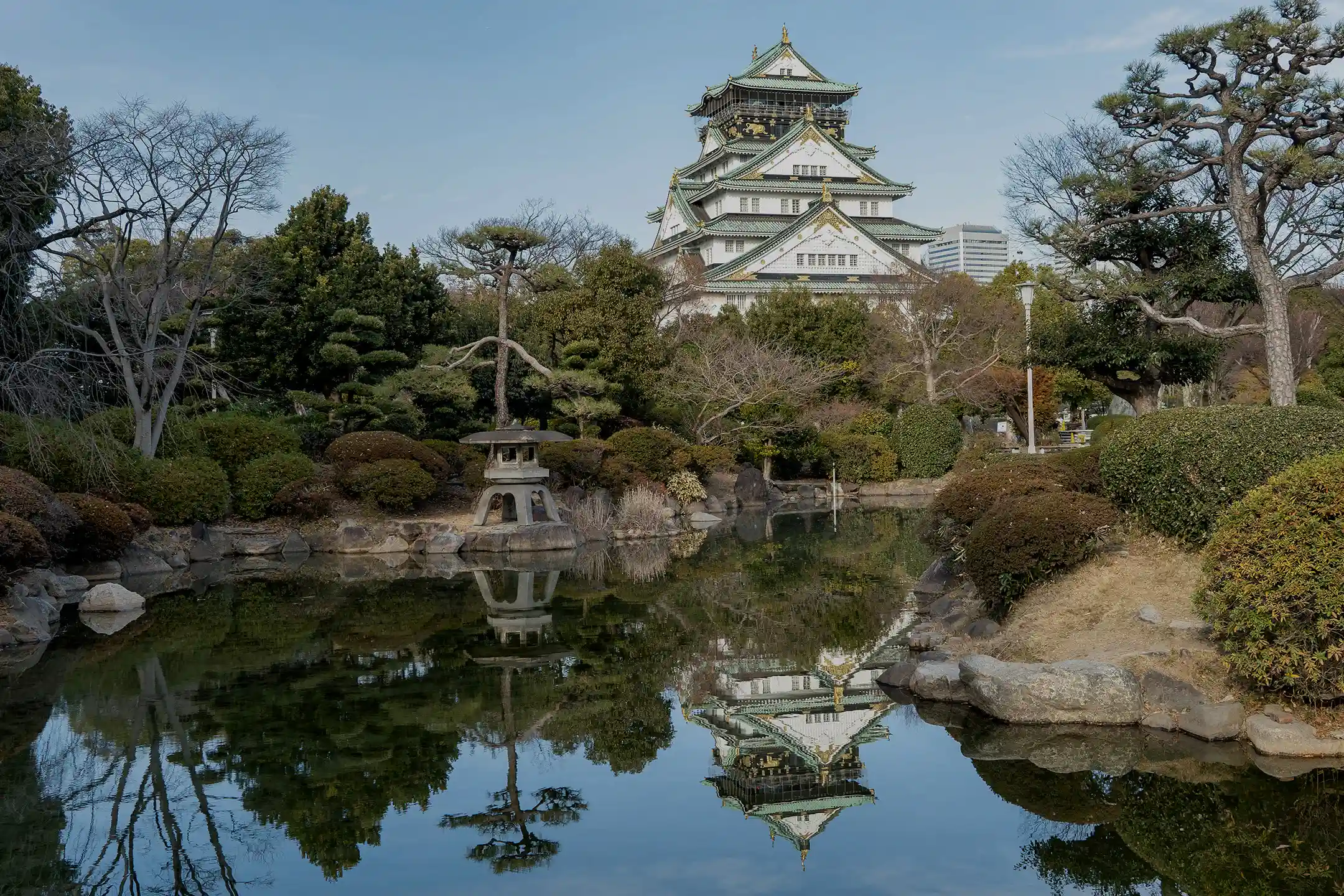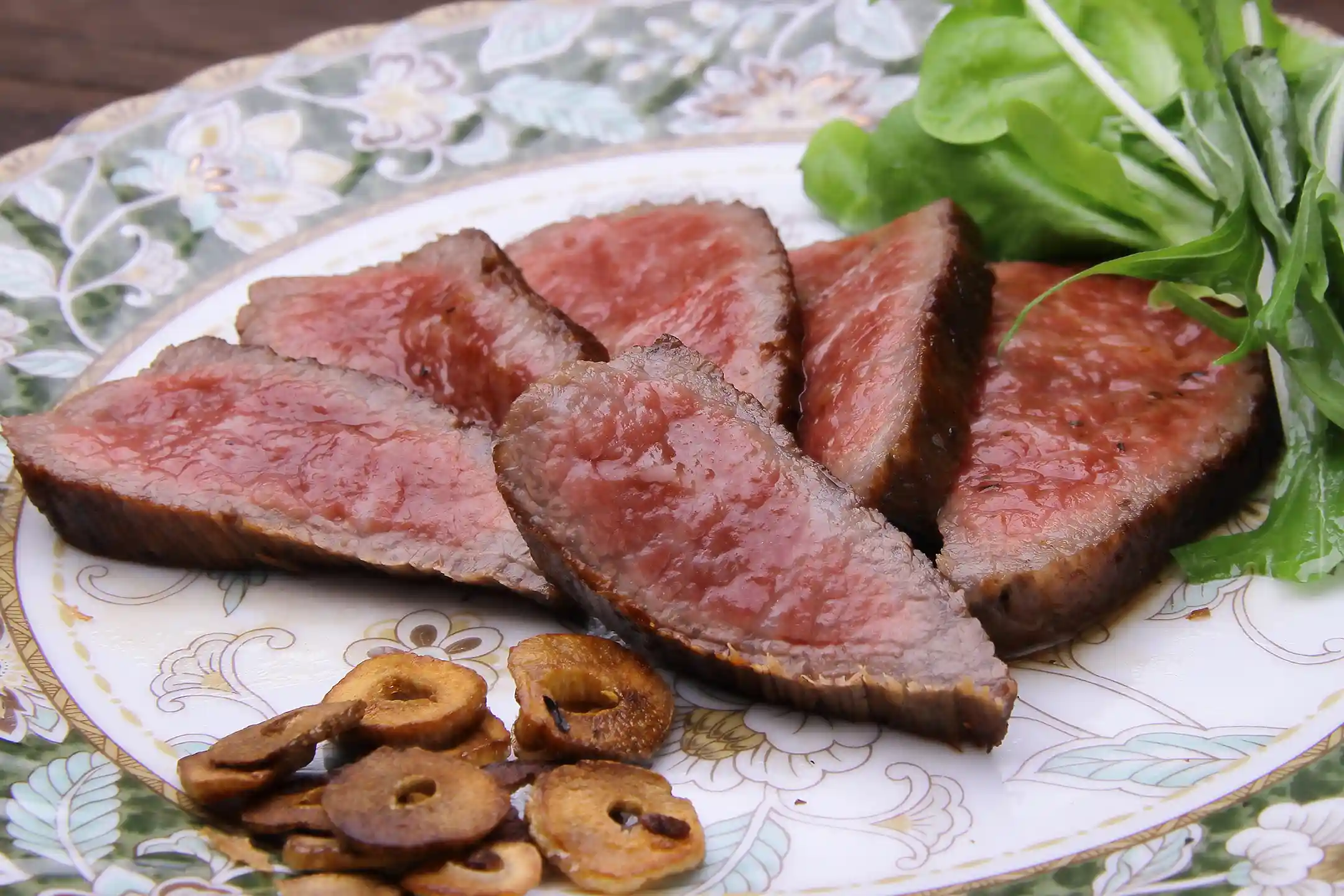“Famed as the ‘city of kuidaore’ (eating oneself into ruin), Osaka has long attracted travelers from around the globe with its abundant culinary treasures. Yet its depth goes beyond a mere variety of flavors. The fusion of history, geography, and merchant life has cultivated a unique charm that sets it apart from other regions.”
In this article, we’ll delve deeper into Osaka’s food culture, offering insights for anyone wondering where to eat in Osaka. Along the way, we’ll highlight comparisons between Western and Japanese food cultures. We’ll briefly touch on concepts like “Orientalism” and “cultural relativism,” so that instead of merely viewing local fare as some distant country’s ‘exotic cuisine,’ we can explore how the people of Osaka have engaged with their history and environment.
Travel that not only delights the senses but also prompts us to reflect on the culture and context behind what we eat provides wonderful opportunities for new discoveries and mutual understanding.
First Things First: The History and Background of Osaka’s Food Culture
Naniwa’s Traditional Cuisine and Its Cultural Significance
During the Edo period, Osaka was known as the “nation’s kitchen” (tenka no daidokoro) and flourished as a hub where goods from all over Japan converged for trade. Merchants not only handled abundant produce but also cultivated two seemingly contradictory traits: a dislike of waste (shimatsu no seishin) and a willingness to spare no expense when it comes to good food (the spirit of kuidaore). This culture of making the most of limited resources while still pursuing high-quality cuisine was closely tied to the lives of ordinary people at the time, reflecting the distinctly Japanese notion of mottainai (“waste not”).

On the other hand, many Western visitors might find these attitudes quite “unique.” In Japan, the natural flavors of ingredients are greatly valued, while in many Western cuisines, bold flavoring with butter and spices is common—indicating different approaches to taste. Rather than asking which approach is superior, understanding these differences as a product of each culture’s history and natural conditions can foster deeper mutual appreciation.

The foundation of Osaka cuisine lies in its dashi (soup stock) culture, itself a product of inter-regional exchange, incorporating kelp from Hokkaido and dried bonito flakes from Kyushu. Classic dishes like udon suki feature a lightly seasoned stock that enhances the ingredients’ inherent flavors, while hari-hari nabe showcases the harmony of whale meat and mizuna (potherb mustard).
Although Japan’s geography and historical factors explain the deep-rooted tradition of eating whale meat, some people abroad might be surprised by the practice of “whale consumption.” Here, a “cultural relativism” perspective can be enlightening. By considering the circumstances and historical context of regions that have traditionally utilized whale, we come closer to an understanding that respects each other’s standpoints.
Other dishes, such as hako-zushi (pressed sushi) and dote-yaki (stewed beef sinew in miso), reflect the lifestyles and values of people in bygone days. Wanting to transform inexpensive ingredients into something lavish fostered a spirit of “inventive ingenuity among the common people,” rendering these foods globally fascinating. When learning about the history and mindset behind these culinary traditions, it’s important not just to mystify “Japaneseness” (Orientalism), but also to interpret these as practical wisdom rooted in real-life contexts.
Dining Venues in Osaka That Celebrate Art and Design
Restaurants and Cafés Renovated From Cultural Heritage Buildings

Osaka hosts many restaurants and cafés housed in historical architecture from the Taishō to Shōwa eras, allowing visitors to savor both the cuisine and the beauty of the buildings themselves. In the restaurant inside Nakanoshima’s Osaka City Central Public Hall, for example, you can enjoy a fusion of Western-style cuisine and Japanese ingredients amidst a majestic Neo-Renaissance façade paired with a modern interior.
Renovating these structures can be viewed as a dialogue between “past” and “present,” embodying a postcolonial perspective on how to carry existing history into the future.
The Old Sakuranomiya Public Hall (Kyū Sakuranomiya Kōkaidō) and Taiyoshi Hyakuban are deeply rooted in the culture of the Shōwa period and the hanamachi (geisha districts). For many Westerners, these places—connected to geisha culture and marked by distinctive décor—might feel like stepping back in time. However, rather than simply seeing them as an “exotic world,” reflecting on the women and artisans who have supported the architecture and performing arts can yield fresh insights.
Venues With Galleries or Art Events
Osaka also boasts numerous establishments where you can enjoy contemporary art and design along with your meal. In the Higo-bashi area, for instance, there are book cafés where you can browse photography collections or art books with a cup of coffee, as well as view works by local artists—stimulating both your eyes and your taste buds.
These spaces also provide interesting case studies for considering issues around “cultural appropriation” in the art world. While Japanese craft designs are embraced abroad as interior décor, foreign motifs likewise become trends in Japan—there is a constant flow of mutual influence across the globe.
At a café in Tanimachi Rokuchōme, the “Canvas Cake”—which you can decorate as if you’re painting a picture—is especially popular. This style of expression through food is reminiscent of Western home-party culture. Meanwhile, at “graf” in Nakanoshima, visitors can experience the fusion of design and dining in a space that also exhibits furniture and miscellaneous goods. Such places exemplify a uniquely Japanese approach to “total art.”
Area-by-Area: Recommended Gourmet Spots in Osaka
(A Great Starting Point for Anyone Wondering Where to Eat in Osaka)
Kitashinchi—Refined Japanese Haute Cuisine in an Upscale District
Located in the heart of Osaka’s Kita area, Kitashinchi developed as an exclusive entertainment district for the business elite after World War II. Here, kappō and kaiseki (multi-course) dining are the mainstays, allowing diners to enjoy the live performance of chefs expertly at work right before them. Many Westerners find the emphasis on seasonality and meticulous plating in Japanese cuisine fascinating, and being able to ask questions in real time as you dine makes for a truly “live cooking performance.”
A fun aspect of Kitashinchi is how it transforms typical Osaka soul food into luxurious experiences through premium ingredients. Even kushi-age (fried skewers), commonly known as a casual bite, can feature extravagant items like chateaubriand, caviar, and truffles, all coated in delicate breadcrumbs and fried to perfection (*1).
In Japan, the philosophy is often “let the ingredients speak,” whereas in Western cuisine, sauces and herbs can more dramatically alter flavor. It’s not about which is superior; learning about each locale’s cultural and culinary background can lead to delightful “aha!” moments as you discover new ways of enjoying food.
Many sushi and tempura restaurants also cater to international visitors with English menus and other services. Private dining rooms are common in Kitashinchi, offering a chance to experience Japan’s distinctive omotenashi (hospitality). While it may seem a bit formal at first, stepping into this world can be an eye-opening and welcoming adventure.

Shinsaibashi & Namba—Where Trends and Tradition Merge
Osaka’s Minami district, encompassing Shinsaibashi and Namba, has long been the center of merchant culture—once referred to as the “nation’s kitchen”—while also serving as a cutting-edge hub for fashion and youth culture. Dōtonbori’s enormous billboards and rows of street stalls make frequent appearances in international media as emblematic images of Japan (*2).
Some Westerners, however, might wonder, “Is this just a stereotypical image of Japan?” Indeed, this area brims with Osaka’s street energy and bustling atmosphere. Even tourists can easily sample takoyaki and okonomiyaki as street food, part of the district’s enduring charm.
Nearby, Kuromon Market in Namba has been around for over a hundred years and is beloved as a “kitchen” providing fresh local produce (*3). The lively market vibe—where you can snack on sushi or tendon (tempura over rice) on the go—can seem like “quintessential Asian chaos” to many Western visitors.
Rather than simply consuming this image as a form of “othering,” actually interacting with shop owners and local customers offers glimpses into everyday life brimming with warmth and hospitality. English and multilingual signage has gradually increased, reflecting Osaka’s flexibility in welcoming people from diverse backgrounds.
Shinsaibashi is also home to Midosuji, lined with high-end brand shops, and the youth culture hotspot known as Amerikamura. You’ll find plenty of cafés, bars, and fusion dining options scattered throughout, while the backstreets still contain classic kappō restaurants and izakayas from bygone eras. This creates a mix of “Shōwa retro” and “cutting-edge trends.” Rather than evaluating this multilayered cultural landscape through an “ethnocentric” lens, one gains deeper insights by experiencing it firsthand—savoring local food andconversing with residents.

Temma & Umeda—A Gourmet Town Rich in Diversity
Another highlight in Osaka’s Kita district is the Temma–Umeda area. Temma is known for its old-fashioned charm, where locals gather at countless eateries. The Tenjinbashisuji Shopping Street, said to be the longest arcade in Japan, is lined with historic tea shops, knife stores, and standing skewers (kushi-katsu) bars, offering a tangible slice of “real Osaka daily life” (*4).
It’s often here that international media discover “deep Osaka.” Because people of all walks of life come and go, spontaneous connections form easily, and the concept of ninjō (“human warmth” or “empathy”) fits Osaka’s character perfectly.
Meanwhile, Umeda’s skyscrapers and department store basements contain sprawling gourmet zones packed with cutting-edge international restaurants. From vegan- or halal-friendly spots to eateries serving cuisines from around the globe, you can sample a wide range of food cultures all in one place. This variety showcases Osaka’s longstanding “openness to outside influences.”
Even if some may worry about “cultural appropriation,” Osaka tends to embrace new cultures and add its own spin, reflecting a tradition dating back to its “nation’s kitchen” days. This inherent flexibility is perhaps a legacy Osaka has carried forward through the centuries.
Stimulating Intellectual Curiosity Through “Learning” Food Experiences
Cooking Classes Where You Can Experience Artisanal Skills
Rather than just eating, actively taking part in creating food deepens your cultural understanding and enriches your trip. Osaka offers numerous cooking classes taught by professional chefs. For instance, at “Washoku Home Cooking Machiko,” an instructor in kimono meticulously teaches homemade dishes and dining etiquette (*1). They welcome international guests with diverse food backgrounds, including vegan and halal.
Japan’s cooking traditions are distinct, from making dashi to using various cutting techniques. Participants can observe these artisanal skills up close and learn while doing, making cross-cultural understanding through cooking a fun and natural process. For example, while oven-based cooking is prevalent in the West, Japan relies heavily on pans for stir-frying or simmering—these everyday differences become strikingly clear in a hands-on environment.
Elsewhere, you can step into the shoes of a sushi chef at “Sushi Murakawa” or learn the finer points of takoyaki-making alongside a local takoyaki chef—experiences that reveal subtle tricks you’d never pick up by simple observation. Classes like these are open to everyone, contributing to a more inclusive society through food.
Guided Food Tours With Expert Commentary
For a more structured exploration of Osaka’s culinary scene, guided tours led by experts are highly recommended. Culinary historians or chefs will guide you around Dōtonbori or Kuromon Market, explaining the background of Osaka’s signature dishes along the way (*2).
Many guides speak both Japanese and English, so don’t hesitate to ask questions. Engaging with local people will expose you to deeper layers of food culture, and you may realize that “what I considered normal at home might be quite distinctive elsewhere.”
Night tours are particularly fun, as guides may lead you to hidden gems in backstreets, bridging conversations with shop owners so you won’t feel the language or cultural barriers. If the tour includes an expert on sake, you can learn about Japanese sake, shōchū, or wine through tasting and gain a deeper appreciation of Japan’s alcohol culture.
These tours often bring together participants with diverse international backgrounds, making them an ideal setting to sense “intersectionality.” Sharing a moment of “this is delicious!” creates a powerful bond that transcends national boundaries.
Conclusion: The Culture and Fresh Discoveries Awaiting You at Osaka’s Dining Venues
At first glance, you might think Osaka’s food culture is merely about flavors—like sauces or dashi. In reality, geographical conditions, historical contexts, merchant lifestyles, and philosophical outlooks weave through it all. The balance between Edo-era “economical spirit” and “kuidaore” is a prime example of Japan’s mottainai ethos, revealing an unexpected commonality with some Western cultures that likewise prioritize “quality over quantity.”
Moreover, Osaka boasts a wealth of establishments that go beyond mere dining, from historical architecture turned into restaurants to cafés that fuse art and design. Few other cities offer such a richly varied culinary landscape. Rather than viewing these as “cool tourist spots” alone, asking why these places exist and how they are preserved can amplify your travel experience many times over.
Finally, one of the qualities that makes Osaka’s food scene so special is its emphasis on “human connection.” Whether casually chatting with stall vendors at a market or conversing directly with a chef at a fine dining restaurant, an undercurrent of genuine warmth is always present. This is the first step to mutual understanding, laying a foundation not just for “enjoying” culture but also for respecting it.
When you visit, take a moment to appreciate the deeper currents of this city’s food culture. If you’re wondering where to eat in Osaka, remember that a culinary journey here can satisfy both your senses and your heart, offering fresh lessons and surprises at every turn.
Author Bio






.webp)
.webp)